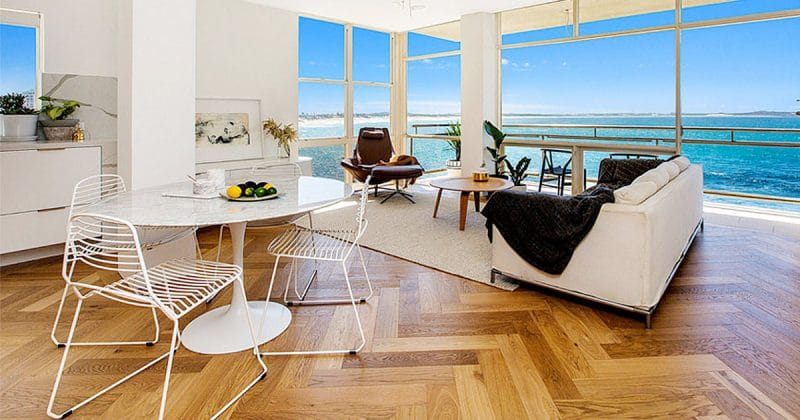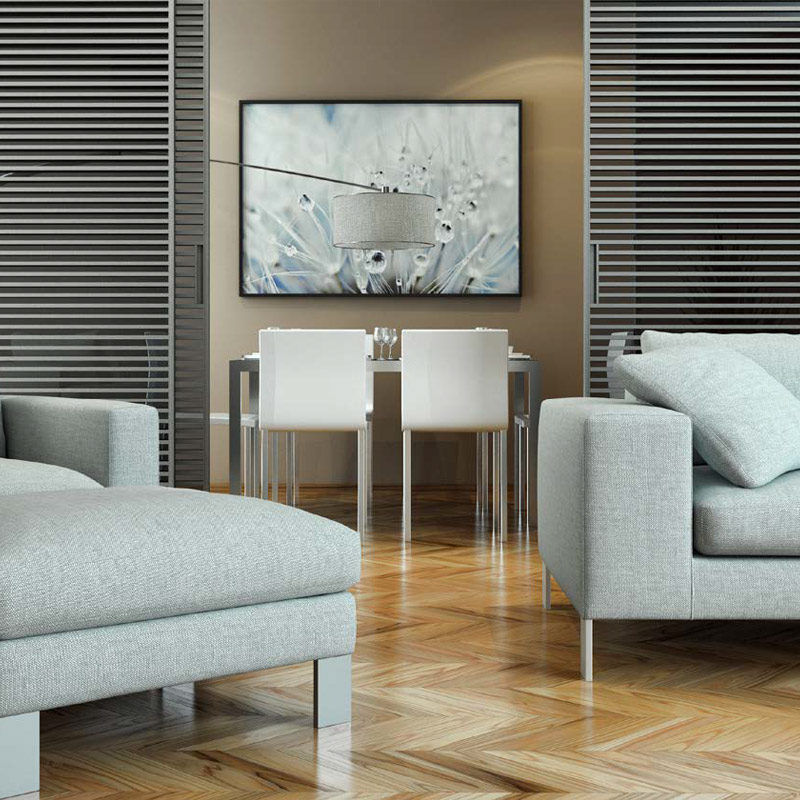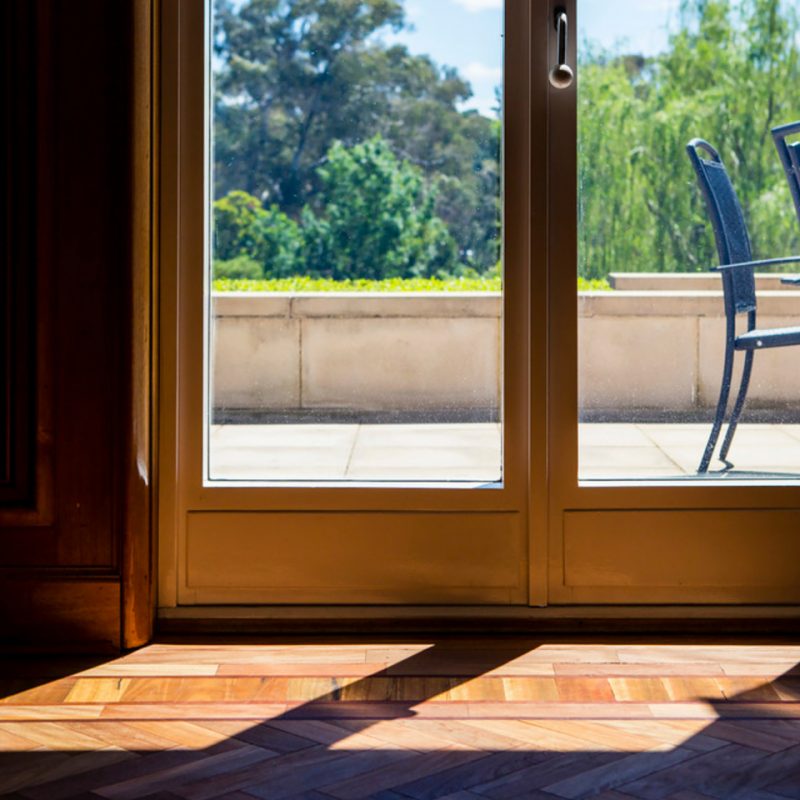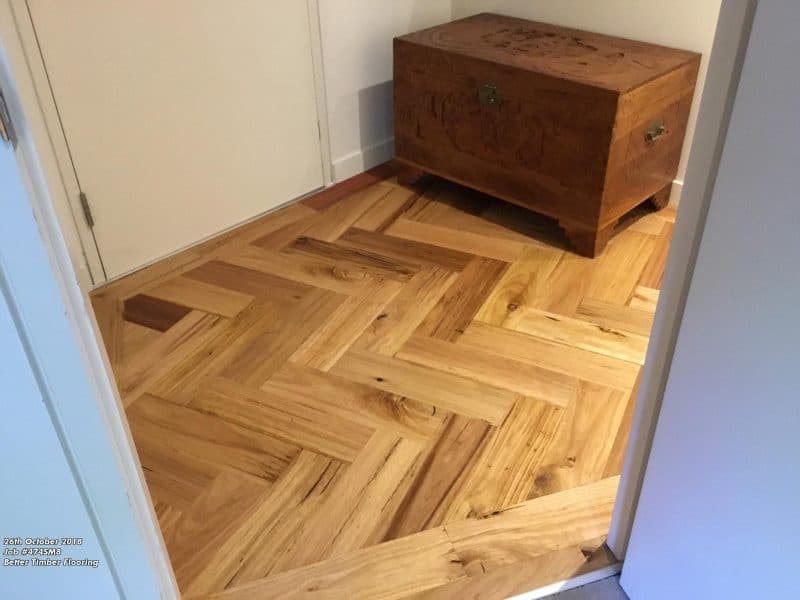
Wood Floor Installation Service
Mr Timber Flooring offers both Installation, and a Supply and Install service.
We install wood floors, engineered oak and Australian hardwood timber flooring in homes and businesses in Canberra the Australian Capital Territory, and metropolitan suburbs of Sydney New South Wales and Melbourne Victoria.
We are members of the Australasian Timber Flooring Association (ATFA) and an education partner of the National Wood Flooring Association.
Wood Floor Installation Methods
We offer the following installation methods for your consideration.
Direct Stick Straight to Slab with a Foaming Adhesive.
This method is very firm underfoot. The use of foaming adhesive allows for full contact under the flooring which eliminates any “drummy” or hollow sounding spots. This installation method also allows seamless transitions to carpeted areas. We seal the slab with a moisture barrier , then install the timber, sand and finish the flooring.
Ply On Plank Installation.
12mm structural plywood glued by way of full trowel to ensure no hollow or drummy spots.The wood flooring is laid, double stuck by way of full trowel glued and then secret nailed. We then sand and finish the flooring.
Acoustaply™ Installation.
Acoustaply™ is our combination of rubber and plywood as above fully trowel glued with adhesive and the flooring double stuck over the underlay.
This system is a great benefit to the cushioned support underfoot, with the acoustic ambiance of a quiet step. Acoustaply™ also provides excellent thermal insulation qualities. You can learn more about Acoustaply™ here.
We seal the slab , then install the timber, sand and finish the flooring.
Getting Ready for Installation of Wood Flooring
Removing and disposing of old flooring, moving furniture to another room and prepping the area are all steps in the installation of wood floors. These are steps you can do yourself and help reduce the amount you pay.


Timber and Wood Flooring Pre-Installation Checklist
Check for Moisture- Subfloor
Concrete Slabs:
- Porous by nature, concrete slabs permit moisture to pass through in vaporous form. You must install adequate protection atop concrete to prevent this moisture from infiltrating into the laminate, bamboo, or timber floor.
- Poor subfloor ventilation and inadequate drainage are contributing factors to concrete with high moisture content.
- Your concrete slab may not be cured properly if it is chalky — i.e. if it marks easily if you run a coin over its surface. Improperly cured concrete will not prevent moisture from passing through.
- Slabs laid in new homes need the requisite amount of time to set properly.
- No concrete slab should exceed 5% moisture content prior to installation.
- Take and keep moisture readings before installation occurs.
Timber Substrates:
- Houses that are built upon joists and battens need a minimum amount of drainage and ventilation to prevent moisture buildup beneath the subfloor.
- Moisture checks must be conducted before beginning installation. Use a surface moisture meter and keep all records.
- Moisture content must not exceed 12 percent before installation. This figure must not be exceeded in the future.
Inspecting the External Site
- Ensure there is enough ventilation and airflow beneath the structure. This will stop moisture from building up below your substrate.
- Proper drainage must be in place to prevent moisture build-up beneath the dwelling. Examine any garden beds that are adjacent to foundation walls. Check foundations thoroughly before installation begins.
- Check to ensure there are no leaks in any external plumbing fixtures.
- Clear any blockages in downpipes to prevent moisture ingress into the walls of the dwelling. Not doing so can lead to this moisture infiltrating into the floor.
Inspecting the Internal Site
- Check for leaky equipment. Telltale marks around ceilings and doorways and around walls from appliances like heaters, dishwashers, washing machines, and fridges will alert you.
- Check for plumbing fixtures that may be leaking. Shower basins and sinks may need to be re-sealed properly.
- Bamboo, laminate, and engineered timber floors are not recommended to be used in conjunction with evaporative coolers. If it is impractical to change plans, ensure there is a maximum amount of expansion space left for flooring to accommodate these high-humidity conditions.

Reach Out
Take the next step and let us assist you with your next project.
